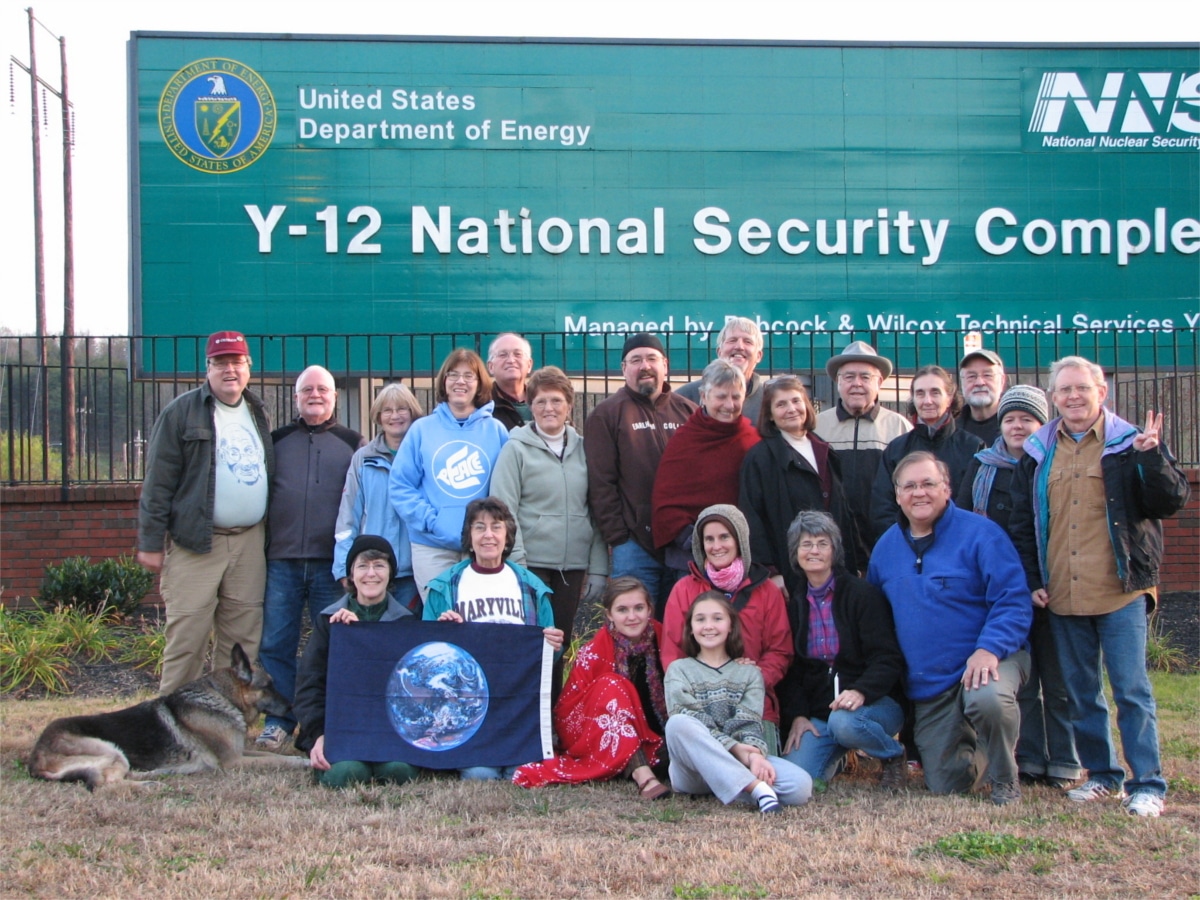First Report on the Scoping meeting for the Supplemental Environmental Impact Statement on Expanding Tritium Production and Increasing Tritium Releases to the Environment
20 October 2011
Athens, Tennessee
Cooperating agencies present: National Nuclear Security Administration (Curtis Chambellin) and Tennessee Valley Authority (Dan Stout)
Agencies not cooperating and not present: Nuclear Regulatory Commission and Tennessee Department of Environment and Conservation
Dan Stout and Curtis Chambellan laid out the proposed action and the four alternatives under consideration. The presentations reviewed the information published in the Notice of Intent (Federal Register) and presented virtually no additional information.
Bottom line: Under the new plan, TVA will increase radiation of TPBARs (Tritium Producing Burnable Absorber Rods) from the current high (there are 554 bars now being irradiated at Watts Bar Unit 1) to 1,700. This is the “steady state” expected in the future to meet “mission requirements.”
TVA expects to use Watts Bar Unit 1 for all tritium production, but the S-EIS will also allow for expanding tritium production to the Sequoyah reactors located eight miles north of Chattanooga.
Tritium “permeation” (in regular english, we would call it a leak) will continue to occur at a rate of 3-4 curies per TPBAR per year. It is not clear that this leakage is uniform throughout the TPBAR assemblies. It is not clear that NNSA or TVA clearly understand the technical reasons for the leaking tritium, but it is a function of heat and radiation.
While the NOI says the S-EIS will explore mitigation or tritium releases, TVA’s Dan Stout acknowledged after the meeting no suitable technologies for treating or mitigating these kinds of tritium releases have been identified to date.
During the public presentations, Mr. Chambellan made several statements that raised questions. Referring to the discovery that tritium releases exceeded predictions by a factor of three to four, he said “several years” passed between the beginning of irradiation and the discovery. In fact, as Dan Stout confirmed after the meeting, TPBARs were inserted in the reactor in 2003 and higher-than-expected tritium permeation levels were noted in 2004 and reported to the NRC.
Mr. Chambellan noted factors that prompted the preparation of the S-EIS, including “the 2010 census, and post 9/11 events.” He did not, however, mention Fukushima.
The slide showing factors to be addressed in the S-EIS did not include natural phenomena, though the Watts Bar Unit 1 reactor is located in the East Tennessee Seismic Zone.
About two dozen people attending the hearing. It was not clear who may have been members of “the public” and who were there in some official capacity, but I would guess less than a dozen people were “the public.” Four members of the public spoke at the hearing. Brian Paddock, representing the Tennessee Sierra Club; Ann Harris, representing We the People; Carol Green of the Oak Ridge Environmental Peace Alliance; and Ralph Hutchison, OREPA coordinator.
Not suprisingly, none of the public speakers was in favor of continued tritium production for nuclear weapons, and all strongly opposed plans to expand tritium production, citing a rapidly diminishing need, the technical challenges that lead to tritium contamination of the Tennessee River, and the need for the US to lead the global disarmament effort by example.
Brian Paddock called on the NNSA to hold hearings on the S-EIS in South Carolina, where “people are tired of being dumped on,” and in Chattanooga where children are drinking tritium in their tapwater. Paddock noted that seven years after the beginning of full-scale irradiation of TPBARs and more than a decade after the first Lead Test Assemblies were irradiated, NNSA/TVA have not resolved technical issues surrounding the performance of TPBARs, including the permeation/loss of tritium. Paddock also charged TVA with violating Tennessee’s Clean Water Act which prohibits any change to the radioactivity of state waters without a permit. Paddock called the Tennessee River a sacrifice zone, noting the environmental destruction that followed the construction of dams on the river, the introduction of industrial pollutants, and finally the dramatic impact of Oak Ridge Operations.
Ann Harris raised concerns about security at the Watts Bar bomb plant, and asked who in the audience was representing the Nuclear Regulatory Commission. “Anybody?” she asked, raising her hand. The room was quiet and still. “They didn’t show up?” she said. “Well, bless their hearts, I wouldn’t have either.” Harris went on to say from 2003-2007 records provided by TVA to the NRC indicated tritium releases 300-700 times NRC limits in their effluent, and TVA failed to notify the Tennessee Department of Environment and Conservation for three years after noting higher than expected levels of tritium due to permeation of the TPBARs’ cladding. “It just proves you were trying to hide it,” she said. “It’s just one more coverup.”
Carol Green spoke of the United Methodist Church’s social principles and, standing behind her poster that read “In Defense of Creation” she noted the church’s clear and strong condemnation of nuclear weapons.
Ralph Hutchison set aside his technical comments and asked those engaged in the production of tritium for weapons of mass destruction to listen to the voice of honor which speaks from within. They live by a personal and social code of honor that can be stated, at least in part, as “I would guess most of the people in this room try to live like people should live; we try to do what people should do.” He went on to ask “the leadership of TVA”which really has no dog in this hunt”how you can entrap your employees in a morally untenable situation and retain your honor?”
He went on to say: “I believe a sense of honor lives within each of us. It’s the part that wishes I would shut up and sit down now, the part that will maybe disturb your sleep tonight if you don’t dull it with something, the part that will distract you as you prepare your part of the S-EIS. I believe a sense of honor lives within the institutions you work for”your leadership wants to be honorable, and the culture can be re-shaped from within if enough people demand it for the right reasons.
“Tonight I ask you to listen to your honor. It is pure and it will not deceive you. It may cost you a promotion or a project; a few people may even lose their jobs”it doesn’t have to be that way, but it likely will. What you won’t lose, though, is your honor. You not only get to keep that, you’ll know no one can take it from you, no one can require it of you. The story you will have to tell to your children and grandchildren one day will bring them to tears with pride in who you are and what you did.”
“This is the simple power of honor,” he said, “and you possess it.”
====
The public comment period for the scoping process is open until November 14, 2011. Comments can be sent to Curtis Chambellan at:
Mr. Curtis Chambellan
Document Manager for the SEIS,
U.S. Department of Energy, National Nuclear Security Administration
Box 5400,
Albuquerque, New Mexico 87185-5400
by fax: 505-845-5754
or e-mail at: tritium.readiness.seis@doeal.gov.
Click the link below for a fact sheet with talking points:
The schedule presented at the meeting calls for a Draft S-EIS to be published in the summer of 2012 and a final Record of Decision by the end of 2012. The S-EIS will also serve in large part as the license application for an NRC modification of the reactor license.




